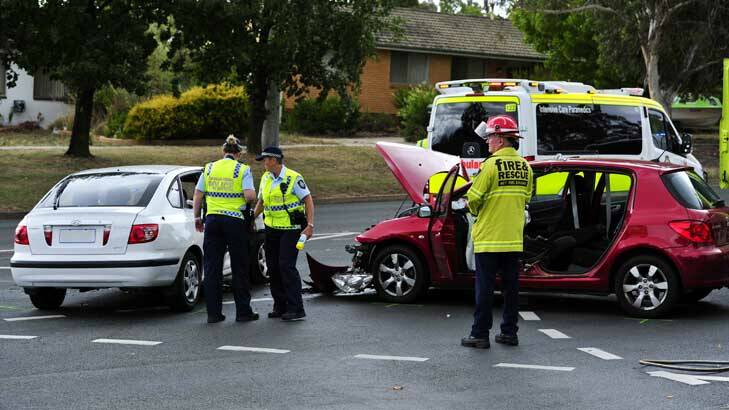We have the nation's lowest rate of road fatalities, but it's a common view that Canberrans are impatient behind the wheel. Is it an accurate view, or are we too hard on ourselves?
Subscribe now for unlimited access.
or signup to continue reading
Accident data released by insurer AAMI last week cited impatience and a failure to indicate as reasons Canberra drivers had a higher percentage of nose-to-tail crashes and crashes into stationary objects.

The report and AAMI observation that "drivers in Canberra are simply more impatient than drivers in other states" sparked dozens of web comments, many suggesting ACT drivers were spoilt by good roads and felt too entitled behind the wheel.
Veteran driving instructor Garry Micallef agreed, saying Canberra drivers were worse than some other Australian cities, with ingrained expectations and a well-designed road network contributing factors.
“Canberrans seem to be a little impatient, partly because Canberra has grown quite quickly,” Mr Micallef said.
“Twenty years ago you could get to Hawker from Civic in 15-18 minutes, now it might take you half an hour, 45 minutes if it's a bad day, and it seems to be taking a little bit more time for people to adjust.”
Mr Micallef has been teaching the next generation of drivers for 27 years, and said merging and give-way signs were a particular problem.
“I've seen people go through a give-way because they just don't notice, because the roads are [in most parts] so well set out,” he said.
“They haven't learnt to flow that well, they're a little bit self-centred when they're trying to merge lanes.”
Mr Micallef has felt the brunt of some of the city's inattentive drivers, and six months ago was in a serious crash when a P-plater failed to give way, leaving his student with a broken collar bone and broken arm and ribs.
“We're more dangerous,” he said.
While improvement is always possible, the stats give residents and government no cause for alarm.
Last year's fatality figure of seven was the territory's second lowest annual road toll since 1959, and came just two years after recording its lowest toll.
An Australian Automobile Association report calculated the ACT's road death rate for the year to September 2013 as 2.62 per 100,000 population, less than half the national average and easily the lowest of any jurisdiction.
The ACT government's latest official road crashes report said since 1991 the territory has had the lowest rates of persons hospitalised per population and per vehicle kilometres of travel, and lowest costs of serious casualty crashes on the same population and distance travelled measures.
Meaningful comparisons with the ACT's overall traffic crash figures – there were 8312 on-road crashes in 2012 – are difficult, as other jurisdictions do not require all traffic accidents to be reported, leaving recorded rates disproportionately lower.
NRMA–ACT Road Safety Trust chairman Don Aitkin has long said the fatality rates give a misleading impression of Canberrans' driving skills, with no account taken of ACT residents who die on other – particularly NSW – roads.
“We have commissioned a study on that in the past, and by and large about as many Canberra residents died interstate as died on ACT roads,” Mr Aitkin said.
“Our cars are safer, roads are safer, tyres are safer [than in the past], and the reason we have lower deaths in the ACT is that we don't have high-speed roads and b-doubles.”
The latest commissioned study, released by ARRB Group last year, found fatal crashes involving ACT controllers were three to five times more likely to occur in NSW than in the ACT, on the basis of vehicle kilometres travelled in the 2006 to 2010 period.
Mr Micallef said the melting pot that is Canberra also created potential problems.
“One issue we do have is that we have a lot of people here form many other places, be it from interstate or overseas – that's where problems can come,” he said.
“You get one person who is going by slightly different rules … different speeds, different sized gaps.”
The government does include some road rules brochure with registration renewal notices.
Are we impatient drivers? Leave a comment.

